Dell U3014 LCD Review
by Chris Heinonen on April 15, 2013 2:00 PM ESTI'm not too surprised, but the U3014 sure does calibrate quite well. Using CalMAN 5.1 and targeting the sRGB gamut, 200 cd/m2 of light output, and a 2.2 Power Gamma Curve, we obtained some mighty fine results.
Grayscale performance went from fine to superb. We see almost no colorshift at all in the RGB balance, even down at 0%, and an average CCT of 6551. The Gamma is close to ruler flat with a small bump at 5%, but an overall average of 2.22, and our average grayscale dE2000 is just 0.64. Our contrast dropped slightly to 863:1, but that’s a small sacrifice for this grayscale performance.
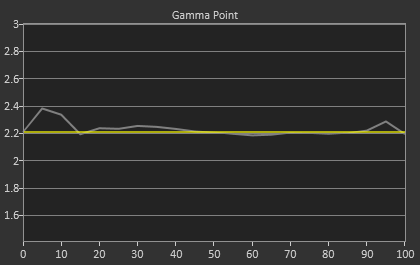
Colors were already good, but with the improved grayscale we dropped the average dE2000 down to 0.90. Color primary and secondary performance is pretty close to perfect here.
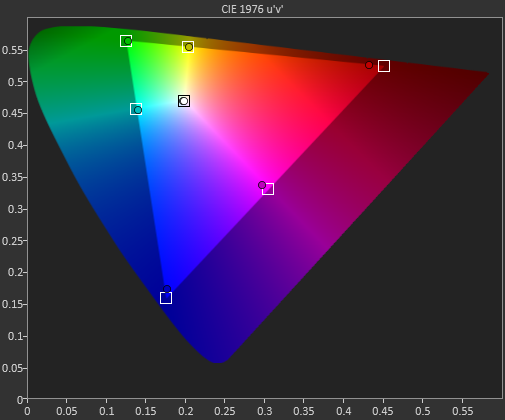
The Gretag chart saw a serious performance increase as well. Our average dE2000 is now 0.73, which means you can’t see any issues with the naked eye at this point. The tiny luminance errors are also totally gone, and if you’re looking for something to complain about on this chart, you’re going to have to keep looking. No error even gets close to 2.0, so this color is practically perfect.
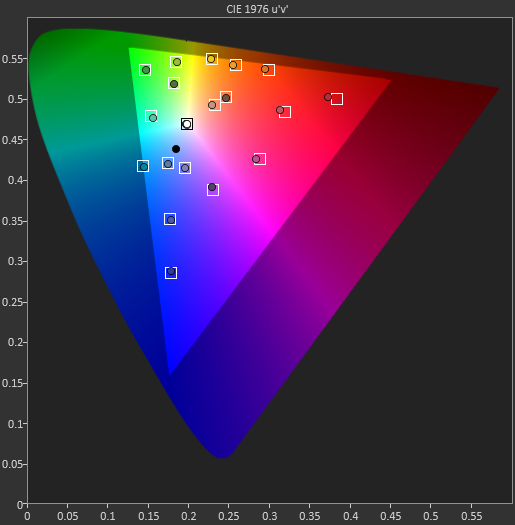
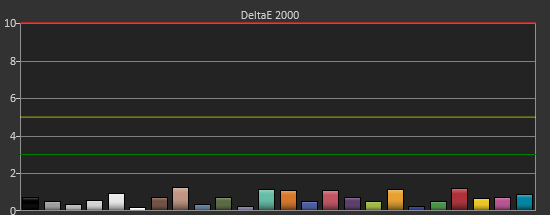

Saturations are just as perfect. Some numbers creep over a dE2000 of 1.0 but very few, and you can’t notice an error that small anyway. Unless you’re measuring with an instrument, it’s going to look perfect.


We also target print and photo applications, and for those we use the sRGB standards: 80 cd/m2 of light, and the sRGB gamma curve. Most of the numbers are directly comparable to the 200 cd/m2 numbers, so I’m going to focus on those that actually changed. First, the U3014 does a very good job of tracking the sRGB gamma curve. We can ignore the number, as unlike power the number varies across the curve, but we want to see how it lines up. The little bit from 0-5% where it doesn’t line up is likely because CalMAN can only measure those 2 points and would need to measure 1%, 2%, 3%, and 4% as well to track the curve better. Overall it tracks amazingly well, so it can do sRGB very easily.
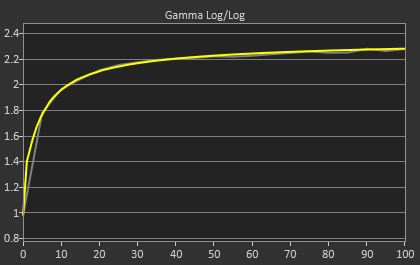
Our color errors are slightly larger, with Red and Blue both being slightly unsaturated in comparison to 200 cd/m2 though the error levels are still very low on average. They just aren’t as exceptional as they were at 200 cd/m2.
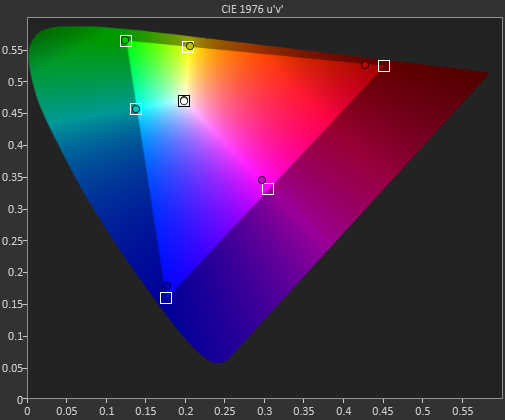
Finally we see that the saturations chart shows slightly more error as well, with some numbers creeping over 2.0 here. Even now they will still only be visible when directly next to the correct color sample, and even then it will be almost impossible to tell. For print and photo work, the U3014 will still work very well; it just seems to perform slightly better at high backlight levels.
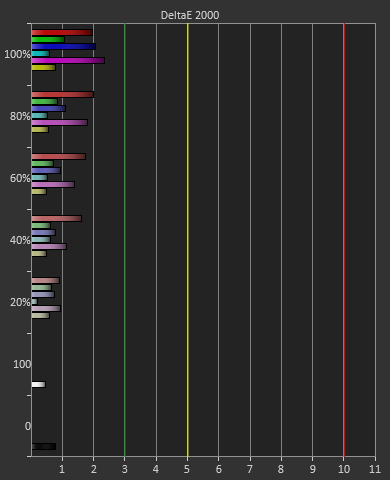


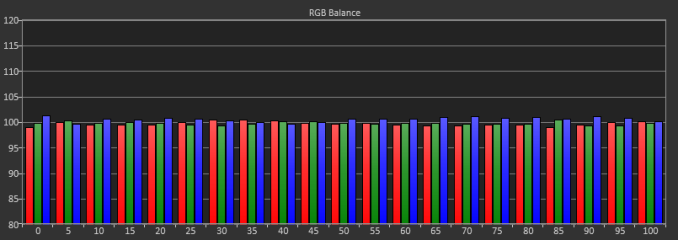
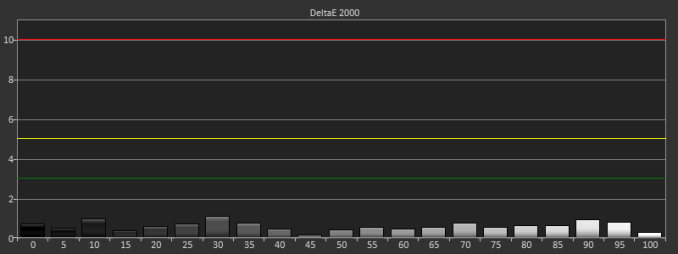











84 Comments
View All Comments
Kevin G - Monday, April 15, 2013 - link
That Sharp display I've seen at sites going for $4500. Still expensive but a definitive step up in terms of resolution from this Dell. I'd love to see a review of it here at Anandtech. *hint* *hint* *hint*jibberegg - Monday, April 15, 2013 - link
Apparently Seiki are offering 50" 4k for $1,500. Anyone heard of them? I smell bad things at that price, but don't want to write it off without more information.http://www.tigerdirect.com/applications/SearchTool...
SeannyB - Monday, April 15, 2013 - link
The current HDMI spec only does up to 30Hz in 4K. This is the thing that stops me from buying one right now, because using Windows or whatever at 30 frames per second is miserable.Kevin G - Tuesday, April 16, 2013 - link
Digging through the Seiki manual indicates that 30 hz is the best frame rate it can get at 4k resolutions. Might be fine for video as the source material in all likelihood doesn't exceed this rate.Another passable usage would to use it as a large format display for 2D imagery. This would be the equivalent of four 1080P 25" monitors of screen space, minus the bezels. Color quality and calibration controls are an unknown, so this use-case is iffy.
For gaming, this refresh rate is going to be horrible.
cheinonen - Thursday, April 18, 2013 - link
FYI, it has no calibration controls at all: no white balance, no CMS, no gamma, nothing. So if you want an accurate image, double the price to include a DVDO or Lumagen box, and those don't work with 4K material yet.SantaAna12 - Monday, April 15, 2013 - link
Apples to apples???High end monitor review....no comparison to Apple.
Hmmmmmmm.......your welcome Dell!
cheinonen - Monday, April 15, 2013 - link
I didn't review the Apple, Anand did himself, and it was with our prior test bench. It's also a white LED backlit model with the sRGB gamut, not a CCFL or G-B LED backlight with AdobeRGB gamut, or any sort of uniformity control. It's a high-end, general use 27" display, not a professional photographer/graphics display, which this is. There isn't a lack of a comparison to spare one of them, they're different markets, with different test bench data.p05esto - Monday, April 15, 2013 - link
You are out of your mind if you think an Apple monitor could touch this. lol, just another clueless Apple sheep.Kevin G - Monday, April 15, 2013 - link
Have you tested the MST functionality of this device? I'd to see how this works out, especially with this and a DP 1.1 monitor.cheinonen - Monday, April 15, 2013 - link
I did, and it's discussed in the article. Worked fine with the monitor I have here, with a couple of caveats.